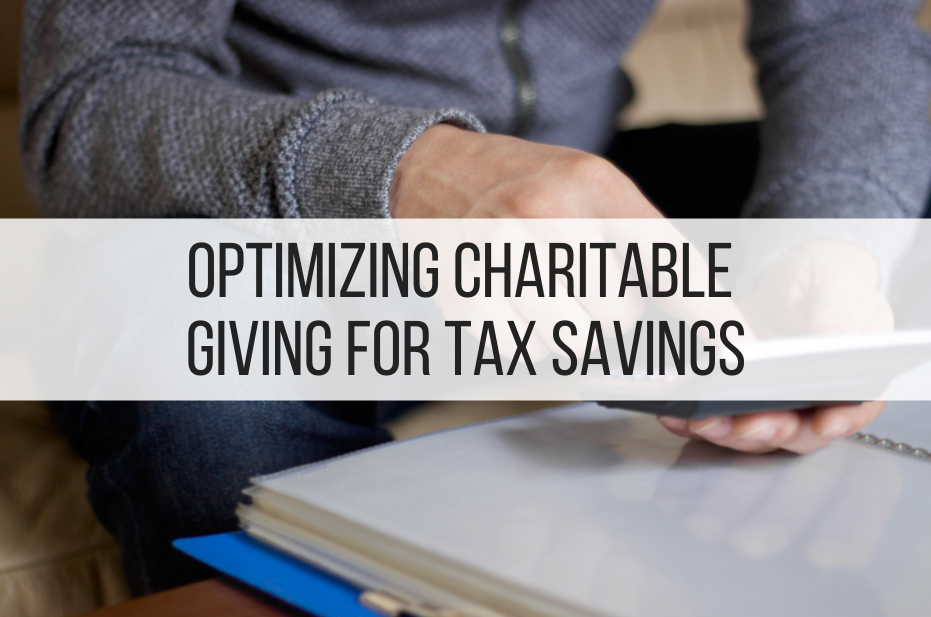
Despite the highly publicized concern that the 2017 Tax Cuts and Jobs Act (TCJA) would undermine charitable giving in the United States, giving has continued to be high. There’s a simple reason for that: people like to give to causes they care about, regardless of the tax benefits they receive.
Charitable giving and the standard deduction
The TCJA famously doubled the standard deductible for taxpayers, which meant that fewer filers would need to itemize deductions on their returns. For individuals or married couples who don’t have qualified deductions in excess of the standard deduction, taking the standard deduction is typically the right choice.
The standard deduction for 2020 is $12,400 for individuals and $24,800 for married taxpayers who file jointly. These numbers will go up slightly for the 2021 tax year.
If you are outside the scope of the standard deduction and need to itemize your deductions, your charitable giving still has important tax benefits. The higher your anticipated tax bill, the more benefit you can see.
Ideas for getting the most from your giving
Here are some of the ideas the tax professionals at Ferguson Timar are thinking about as we head into the end of the year:
- Give more in 2020.
As part of the federal government’s coronavirus relief programs, the IRS has temporarily suspended its limits on how much an individual or married couple can deduct for charitable giving. An individual taxpayer typically can’t deduct more than 60 percent of his or her adjusted gross income in a given year. This cap doesn’t apply to cash gifts made to a qualified organization by December 31, 2020. “Qualified organizations” include religious organizations, veterans’ groups, and fraternal societies. See the complete list on the IRS website.
This one-time rule change can have profound implications for individuals and families who are in a position to take full advantage of it this year.
- Cover the basics.
Getting the most from your gifts to charity begins with the basics. To claim a deduction for charitable gifts two important thresholds must be met.
First, the deduction needs to be supported by the right kind of documentation. A gift can only be deducted if it is supported by a written record that complies with IRS rules. Gifts of less than $250 must be supported by a written record reflecting the date and amount of the gift, and the name of the charity. Note that a bank record can be enough to meet this requirement for smaller donations. Gifts of $250 or more need a written acknowledgement from the charity, which must reflect any goods or services exchanged for the gift, among other things.
Second, to be deductible a contribution needs to be made to a qualifying nonprofit entity. A common misconception is that contributions to any nonprofit are automatically tax deductible. Make sure that the organization you’re giving to is a 501(c)(3) nonprofit. This is the most common category for charitable, tax-exempt nonprofits, like churches, food banks, many research foundations, and more.
Many nonprofits are organized as 501(c)(4) social welfare organizations. These entities are often set up for a political purpose, such as lobbying for new legislation. Gifts to a 501(c)(4) are not tax deductible. The National Rifle Association is a good example of the a 501(c)(4) organization.
If in doubt, you can check the status of an organization on the IRS website.
- Think about giving appreciated securities.
Instead of giving cash to your preferred charity, consider gifting securities that have accumulated long-term gains. You get to claim the fair market value of the security as a deduction, and you also avoid the capital gains hit that would come from selling the security.
When contributing securities to a charity bear in mind that the charity will take on your cost basis in the gifted security. Some organizations have policies against accepting securities as donations due to the extra paperwork and potential tax complications they might face when they sell in the future.
- Consider IRAs in your charitable giving strategy.
Individuals who are over the age of 72 can make a qualified charitable distribution, or QCD, from an IRA directly to a charitable organization. A QCD from a traditional IRA to a qualified charity will avoid treating the withdrawal as a taxable event. It also can satisfy your required minimum distribution for the year.
Ferguson Timar will guide your approach to charitable giving.
The tax professionals at Ferguson Timar are committed to finding tax-efficient strategies that will allow our clients to achieve their financial goals while also supporting causes they care about. What charities would you like to support in 2020? Call Ferguson Timar at (714) 204-0100 or send us an email to get started today.
